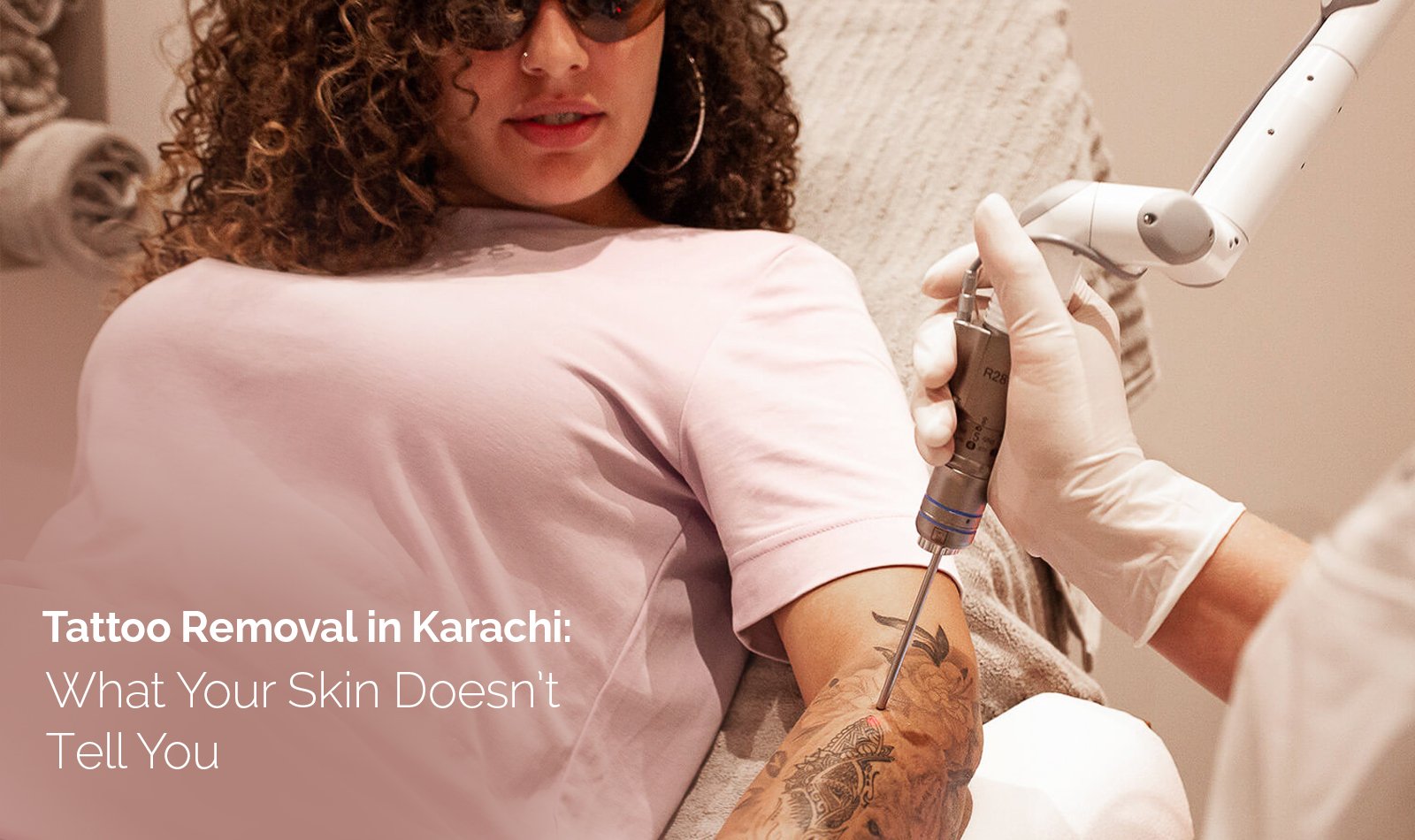Contents
- 1 Why Tattoos Stay Permanent?
- 2 How Tattoo Removal Works?
- 3 Why the Tattoo Removal Clinic You Choose Matters
- 4 What to Expect During the Process
- 5 How Dr. Fehmida’s Assist:
- 6 The Difference Between Temporary and Permanent Services
- 7 What Affects Tattoo Removal Success
- 8 What Happens If You Don’t Finish the Sessions?
- 9 Here’s a Simple Comparison of Common Tattoo Removal Methods
- 10 Final Take:
You got a tattoo that might have felt right that time. Now it feels different. You might have regrets, a promotion, or just want a clean slate. Whatever your reason, removing a tattoo is more than just fading fashion.
Many people think that laser tattoo removal is simple. But your skin stores ink deep in its layers, and not all inks or skin types respond the same way. Some marks disappear fast. Others stay. And improper treatment can leave scars or pigment changes that weren’t there originally.
This guide’ll explain what you need to know before starting tattoo removal in Karachi, what to expect, and how to pick the right clinic.
First, you need to understand:
Why Tattoos Stay Permanent?
When you get a tattoo, the ink is inserted beneath your top layer of skin. Your body sees it as foreign but can’t remove it because the ink particles are too large. That’s why tattoos are permanent.
How Tattoo Removal Works?
Laser tattoo removal works by sending concentrated light into the skin. This light breaks the ink into tiny fragments. Once broken down, your immune system does the rest, gradually clearing the ink from your body over several weeks. It’s not instant, and it’s not one-size-fits-all. Different inks, depths, skin tones, and locations require tailored settings.
The laser doesn’t remove tattoo. Your body does. The laser just gives it a chance.
Why the Tattoo Removal Clinic You Choose Matters
In Karachi, the tattoo removal services have risen in the last five years. From local skincare clinics to high-end aesthetic centers, the options seem endless. But there’s a sharp difference between clinics that simply offer laser treatment and those that understand skin biology, pigment behavior, and precision-based equipment.
If the wrong wavelength is used, your skin can blister, scar, or stay discolored. That’s why tattoo removal should always be handled by a dermatologist, not just someone trained to use a machine.
What to Expect During the Process
The first thing people notice is that tattoo removal takes time. One session isn’t enough. On average, it takes anywhere between 4 to 10 sessions, depending on your tattoo’s size, color, depth, and your body’s response.
Each session feels like a short burst of heat. It’s uncomfortable, but tolerable. Some people compare it to getting the tattoo itself; others say it hurts less. Numbing cream can help manage the sensation.
After each session, your skin may appear red or swollen. This fades in a day or two. Over time, the tattoo will begin to fade as your body flushes out the ink particles. Complete removal doesn’t always mean no trace at all, but the goal is to make it visually unnoticeable in regular light.
How Dr. Fehmida’s Assist:
Dr. Fehmida offers a clinical, tailored approach to tattoo removal in Karachi. What makes her approach effective is not just the machine, but the method. Cooling techniques, healing support, and realistic timelines are all part of her process. She also educates you about what your skin needs between sessions, including how to prevent scarring and speed up recovery.
This combination of dermatological understanding and technological control is what reduces risks and improves results.
The Difference Between Temporary and Permanent Services
Many people are drawn to quick solutions, including so-called tattoo fading creams or home laser devices. These rarely work and often leave burns or scars.
Professional laser treatment remains the only method supported by dermatologists for safe and consistent tattoo removal. It’s also the only method that can be adjusted in real time based on your skin’s reaction.
What Affects Tattoo Removal Success
Several factors influence how well and how fast a tattoo fades:
- Ink color and type: Some pigments break down easily; others resist treatment.
- Age of the tattoo: Older tattoos fade faster than freshly inked ones.
- Ink density and layering: Heavier ink or cover‑ups need more sessions.
- Location on your body: Tattoos on arms or legs may respond more slowly.
- Your immune system: Your body’s ability to clear broken ink matters more than many people know .
This means session count will vary. Some people see major fading in 6–8 sessions. Others may need 10 to 14, especially for complex designs.
What Happens If You Don’t Finish the Sessions?
This question doesn’t get asked enough. If you start tattoo removal but stop midway, the ink will partially fade but not fully disappear. The tattoo may blur or look patchy. In some cases, ink particles can settle deeper or cause uneven skin tone.
That’s why it’s important to commit to the full series if your goal is complete removal. Missing sessions or waiting too long between them slows down your body’s clearing process.
Here’s a Simple Comparison of Common Tattoo Removal Methods
| Method | Used By | Effectiveness | Risk of Scarring | Best For |
| Laser Tattoo Removal | Dermatologists/Clinics | High | Low | Full tattoo removal |
| Tattoo Removal Creams | Over-the-counter | Low | Medium | Minor fading at best |
| Surgical Excision | Plastic surgeons | Moderate | High | Small tattoos in hidden areas |
| Home Laser Devices | Individuals | Low | High | Not recommended by experts |
Final Take:
Tattoo removal is more than a procedure; it’s a commitment to change. If you’re ready to erase what no longer fits your life, make sure your skin is in safe hands. Karachi offers options. The right one, like Dr Fehmida, respects your story and your skin equally.

